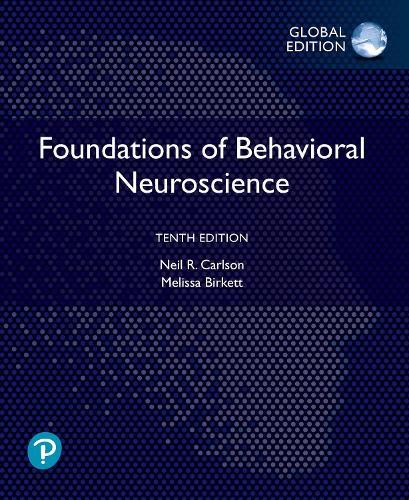Overview
For courses in Physiological Psychology or Biopsychology A streamlined overview of behavioral neuroscience Foundations of Behavioral Neuroscience offers a concise introduction to behavioral neuroscience with a good balance of human and animal studies. Authors Neil Carlson and Melissa Birkett help students grasp the key concepts of the discipline, apply theory and research findings to daily life, and better understand their own behaviour. Along with the fresh perspectives brought by new co-author Melissa Birkett, the 10th Edition incorporates the latest studies in this rapidly changing field as well as a new dedicated chapter on movement, added in response to faculty feedback.
Full Product Details
Author: Neil Carlson ,
Melissa Birkett
Publisher: Pearson Education Limited
Imprint: Pearson Education Limited
Edition: 10th edition
Dimensions:
Width: 22.60cm
, Height: 2.30cm
, Length: 27.40cm
Weight: 1.200kg
ISBN: 9781292349541
ISBN 10: 1292349549
Pages: 528
Publication Date: 18 June 2020
Audience:
Professional and scholarly
,
Professional and scholarly
,
Professional & Vocational
,
Professional & Vocational
Format: Paperback
Publisher's Status: Active
Availability: Available To Order

We have confirmation that this item is in stock with the supplier. It will be ordered in for you and dispatched immediately.
Author Information
Neil R. Carlson pursued his undergraduate studies at the University of Illinois. He had planned to study nuclear physics, but when he discovered in an Introductory Psychology course that psychology was really a science, he decided that was what he wanted to do. Before changing his major, Carlson talked with several professors and visited their laboratories, and when he saw what physiological psychologists do, he knew that he had found his niche. He stayed on at Illinois and received his Ph.D. Then, after a two-year postdoctoral fellowship at the University of Iowa, Carlson came to the University of Massachusetts, where he taught throughout his entire career. He retired from UMass in 2004, but continues to keep up with developments in the field of behavioural neuroscience. As an undergraduate psychology major at Cornell University, Melissa A. Birkett discovered courses in biopsychology, behaviour, endocrinology, and evolutionary psychology. There, she was introduced to interdisciplinary research incorporating multiple perspectives in the challenging task of understanding behaviour. She became interested in learning about behaviour and its underlying mechanisms. She worked as an undergraduate research assistant in several laboratories on projects ranging from insect behaviour to sleep in undergraduates. Those formative experiences and interactions with several influential research mentors convinced her to pursue a career in research. Birkett completed her Ph.D. in the Neuroscience and Behavior program at the University of Massachusetts Amherst (where Neil Carlson was a faculty member at the time). In 2007, she accepted a faculty position at Northern Arizona University in the Department of Psychological Sciences, and in the fall of 2018 became an assistant professor at Southern Oregon University. Birkett currently conducts research related to the stress response and teaches undergraduate courses in psychology, research methods, statistics, behavioural neuroscience, and psychopharmacology. Each semester, she supervises student researchers and seeks to provide them with the kinds of opportunities she found valuable as a student. Her work has been recognised with awards for both outstanding teaching and teaching innovation, and she has contributed to several publications on best practices in teaching neuroscience.




